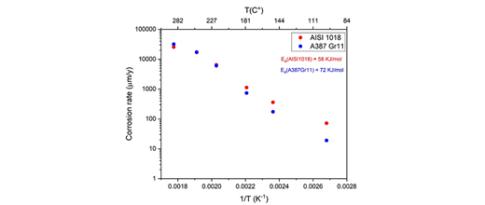16.05.2024
15 minutes of reading

Cécile Barrère-Tricca
Director of the “Chemistry for Industry” R&I Business Unit
Committed to accelerating the ecological transition, IFPEN's mission is to innovate for a low-carbon, sustainable world, by proposing technological solutions to societal challenges.
These solutions will emerge from structured fundamental research, built in line and synergy with applied problems. It is for this reason that our fundamental research activities today are organized around nine scientific challenges (SC) that feed into IFPEN’s innovation process while anticipating future needs.
In this issue, each of the nine challenges is illustrated by a specific development. Taken together, the articles highlight the scientific pathway to innovation ranging from the understanding of complex physical phenomena (experimentation, data acquisition) to the evaluation of a complete system (economic and environmental impacts), via the modeling and numerical representation (simulation) of these phenomena.
All these scientific results are invaluable for accelerating innovation, with some of them supporting the development of the low-carbon and circular economy:
- The “in situ and/or operando” methodological approaches developed will make it possible to identify the properties of a heterogeneous catalyst and their evolution during its lifecycle, including during operation!
- The identification of a unique control parameter in the laboratory will provide exact knowledge about the mixing operating conditions to be applied in order to produce a paste with a specific porosity. It will also be possible to optimize the design of catalyst supports as a function of each target application.
Enjoy your reading !
Cécile Barrère-Tricca
> List of the nine scientific challenges (SC)
SC1 - “Live” heterogeneous catalysts
Heterogeneous catalysts are materials that make chemically possible and economically viable countless industrial processes in the service of energy-related and environmental problems, such as fuel production and air quality (vehicle emissions, building interiors). Their implementation involves two major scientific challenges: (1) the identification of the chemical, structural and morphological properties of an optimal catalyst , (2) the evolution of these properties over the catalyst’s life-cycle (synthesis, preparation, use, recycling)...
SC2 - Biofuel production: understanding and controlling corrosion by renewable feedstocks
Biofuels are one of the components of the transition to renewable energies, and their use is an effective way of decarbonizing transport. However, they are produced from feedstocks whose composition can affect the steel equipment used for their conversion. For example, the hydrotreatment of vegetable oils and animal fats leads to the exposure to high concentrations of oxygenated compounds, naturally present in the initial feedstock or resulting from their conversion...
SC3 - Microfluidics supporting preserved injectivity
Injectivity in geological formations has long been an important factor in oil production (enhanced recovery) but it is now just as important in fields related to new energies and the climate (geothermal energy, CO2 storage, etc.). Injectivity losses, which result from the clogging of geological formations, are a recurrent problem associated with the fact that reinjected water often carries a high concentration of organic and mineral elements in suspension, in the form of colloidal particles...
SC4 - Deep learning for fluid characterization
Data from NIRS are processed mathematically, via chemometric approaches, generally using a Partial Least Squares (PLS)-type model. This linear methodology is aimed at establishing a statistical relationship, represented by the maximum covariance, between an explanatory variable X and a response variable y. It has been successfully used at IFPEN to predict the properties of oil products and, in recent years, it has mirrored the evolution of new energy technologies (NET)...
SC5 - Manufacture of catalytic supports: a new parameter for controlling the kneading of boehmite pastes
Processes using heterogeneous catalysis require the design and development of innovative materials, with controlled mechanical and textural properties, to produce effective catalyst supports. The porous microstructure of these supports has a significant impact on the performance of the supported catalyst, since it strongly affects the support’s mechanical resistance and transport phenomena...
SC6 - Floating wind turbines: gaining a better understanding of the behavior of steel mooring ropes
Mooring lines are essential components for the stability of offshore floating structures, such as those supporting wind turbines. They often consist of steel spiral ropes linked by a chain to the platform (also known as the “floater”). New solutions are currently being studied, in which the rope is directly connected to the floater, thereby removing the need for the chain - which has proved to be a mechanical weak point - and simplifying the connection...
SC7 - Sensitivity analysis of pollutant concentration maps to weather conditions and traffic parameters
Urban road traffic is a significant source of pollutant emissions that impacts air quality. Being able to predict the dispersion of these emissions is of major importance for evaluating real exposure and planning traffic flows. To this end, a PhD research project proposed a modeling chain making it possible to simulate highly turbulent flows on a local urban scale and obtain two-dimensional spatial maps of pollutant concentration...
SC8 - Synchronizing cores rapidly: a matter of efficiency
High-Performance Computing (HPC) is a scientific field involving both mathematics applied and computer science, with applications in numerous fields, including climate, energy, sustainable mobility, etc. In all of these fields, we often need to simulate large-scale physical phenomena with mathematical models that require a lot of computing time and storage space...
SC9 - Behavioral economics: a nudge for low-carbon mobility
At a time when the European Union is targeting carbon neutrality by 2050 (i.e., net zero greenhouse gas emissions), global CO2 emissions from the transport sector, which represent a quarter of the total, are continuing to increase. To overcome this and address the climate emergency, technological improvements and carbon taxes do not appear to be enough. There also needs to be a change in behavior...














